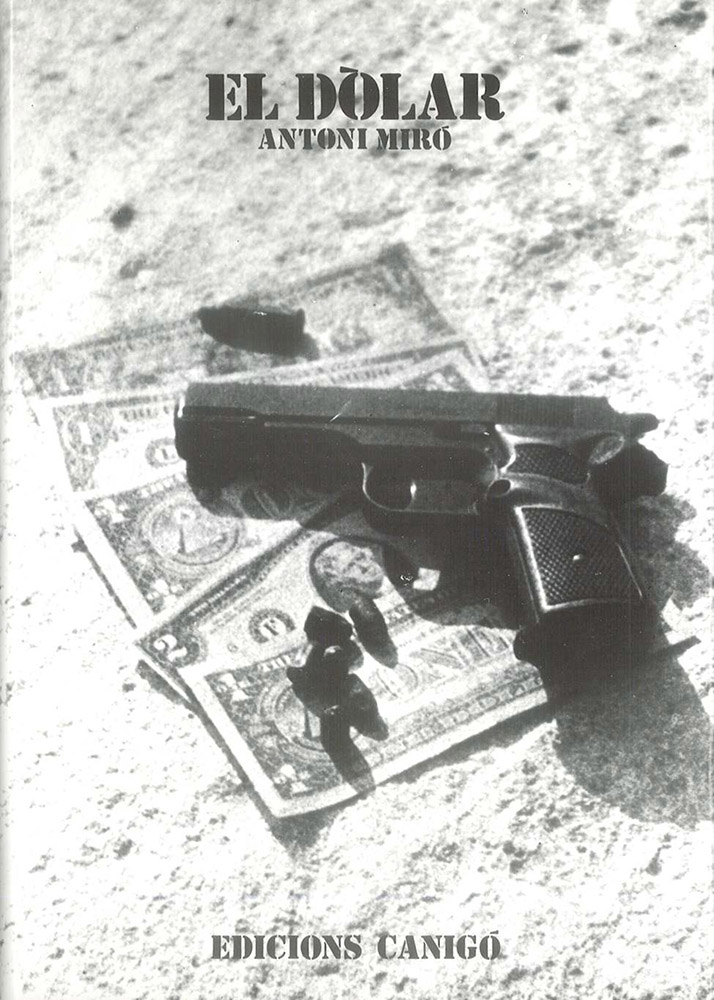Antoni Miró
Alícia Suàrez-Mercè Vidal
Antoni Miró is not an unknown art worker since he has always remained faithful to his national reality. He started his career in 1960 and founded the “Alcoiart” Group shortly after. In his works there has always been a manifest intention to express, report and reflect those situations occurred in and for our society. It was shown in his first series in 1964, “Les Nues”; in 1966, “La Fam”; those dealing with topics about Vietnam (1968), and in 1974, “El Dòlar”.
The works introduced in Barcelona are a compilation of the work done over the last four years, through metal graphics, paintings, paintings-objects, and bronze sculptures. Although within the work of Antoni Miró there seems to be certain diversity, there are some common features that allow us to establish a series of groups, apart from a strict diachrony. So when choosing the signs for their representations, there is a mixture of images of the history of art from the Renaissance period, the Baroque... among others of today's society (tobacco packages, cigarettes, spirits, wristwatches, sunglasses, money, canvas sandals...), and this is what we find in his works of 1973 such as “La Gioconda” and “Esclau i Esclavitzador” (Slave and slave-driver) as in more recent ones. This would be the case of the object-painting “Llances imperials” (Imperial lances), in which he takes the theme of Velázquez's painting, “La Rendició de Breda” (Breda’s surrender), in which the winners and losers identify themselves with the problems suffered by our people. Another group would constitute those works which take an object of great proportions as a sign of representation becoming the sole topic: “La sabata espanyola” (The Spanish shoe, 1975), the metallographic “El dòlar” (The dollar, 1973-76), or the sculptures “El gran es fot al petit” (The big one eats the little one, 1976), “L'home mòbil” (1976), “L'home del capell de copa” (The man wearing a top hat, 1974). A symbolic value is basically found in all of them. There is also a whole group of works in which the human forms are represented either fragmented or non-determinate characters, therefore, by contrasting them to other elements its identification is facilitated (riffles, military dresses, portraits of politicians, money, telephones...), as in “L'Escalada” (1974), which would be the common representation of the business man; “Contra el futur” (Against the future, 1973-76), the first object-paintings of the soldiers “Metamorfosi” (Metamorphosis, 1975), and the graphic metal “Contra l'home” (Against the man, 1973-76), among others to which there is a constant reference to the events occurred in Chile. Finally, the real or simulated use of the later structure of the painting often used by Antoni Miró as an element of space division to represent images-sequences such as the painting “Una noia i un soldat” (A girl and a soldier, 1974); it is also used in the painting-objects as a fence; “Made in USA” (1975-76); as a common site in which repetitive images converge; and it would be the case of the object-painting fitted to take movement when turned on; “Sobre la processó” (On the procession, 1975-76), the color filling Antoni Miró’s paintings is not usually pleasant: the grays, the browns and above all the black colours end up in a bitter touch of the set of images. Ultimately, his concern about collective alienation phenomena and struggles of the peoples suppressed by others, although being ironic in some cases and using the “pop-art” resources (parody, seriousness, fragmentation, repetition...), his work is halfway through critical realism and “pop art” offering the viewer, here or abroad, enough elements to understand the meant burden Antoni Miró sets out to reflect.
